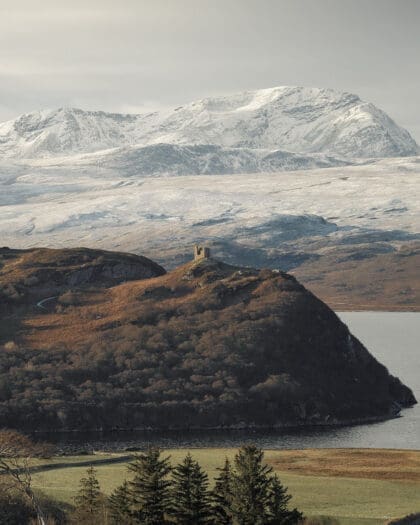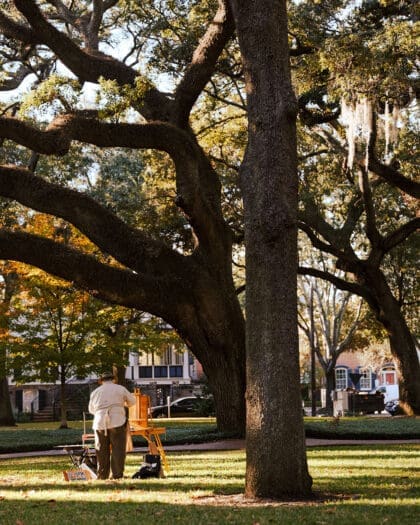
In Motion: Cycling the Desert of Wales
Taking in the Cambrian Mountains and the Elan Valley, we explore this rural, remote region of Mid Wales by bike, venturing along bumpy trails and staying in hidden bothies
It’s golden hour at the top of a remote lane, the sun setting over grassy hillocks and glistening pools. My legs are heavy from three days of pedalling over the hills of Wales, midway through a cycle up the length of the country from Cardiff to Holyhead with a friend, taking in the Brecon Beacons, and soon to encounter Snowdonia. Although not a single building has been visible for over an hour, my navigation says we are close to where we’re staying for the night. Apparently there’s a turning to the left, but all I see is a wet, mossy passage between two hills.
We start down the gap with trepidation. Cycling for longer than I was imagining, and crossing a wooden plank over a trickling stream, a bothy appears in a little clearing – a humble shelter flanked by a crumbling stone wall. We step inside to find two dark rooms. A narrow staircase leads up to two further rooms beneath the eaves, where wooden shelves built off the walls offer a place to roll out a mat and sleep.
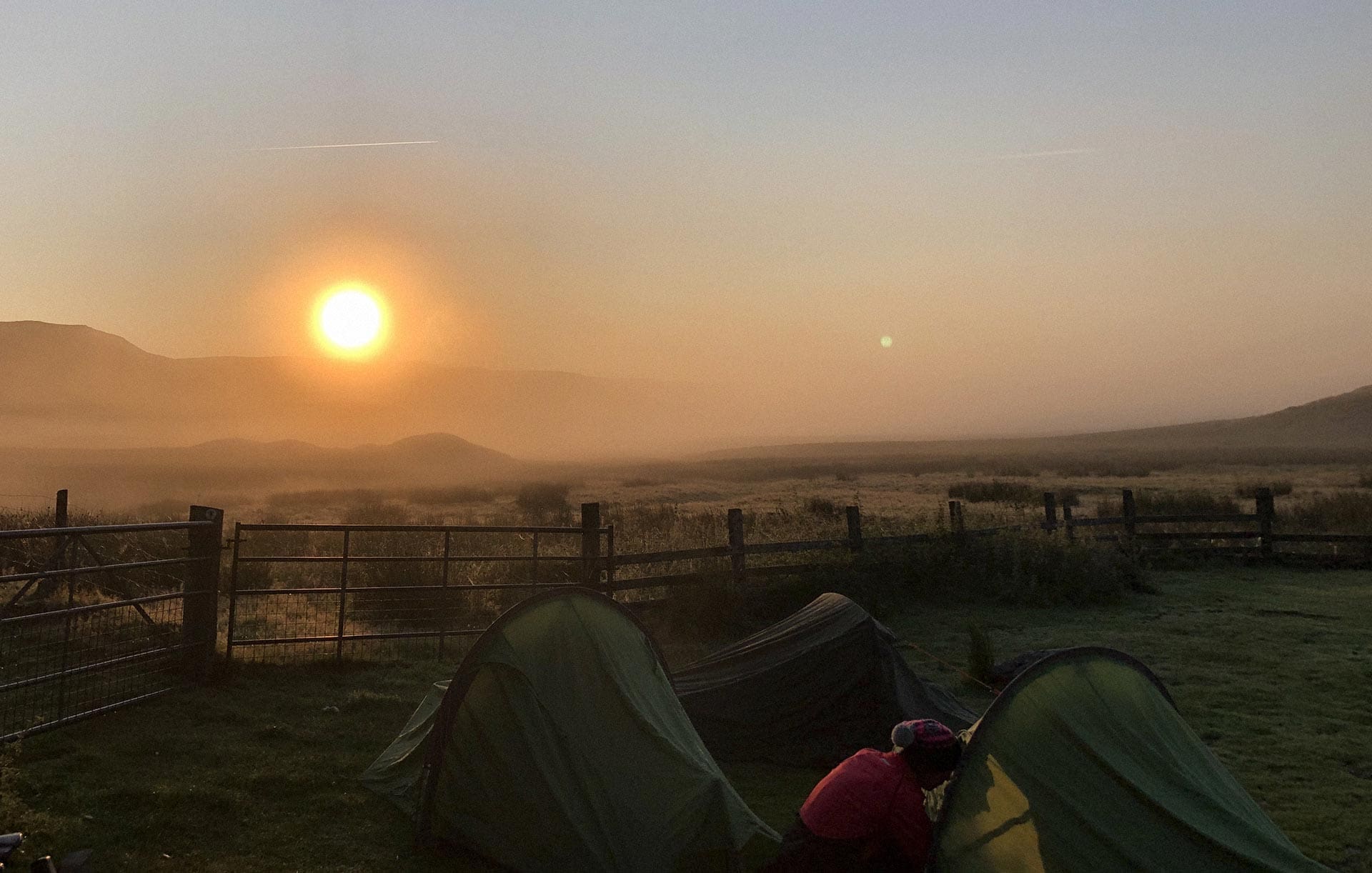
After cooking up some simple pasta on a camping stove outside in the dusk, we crawl into our sleeping bags. Getting up in the night, outside is surprisingly bright, the moon illuminating a low mist over the hills. It is completely silent, the baying sheep long forgotten.
An early morning start, and our bags are strapped back onto the bikes. We have everything we need, with the freedom to go in any direction we please. Wheels hum again over grumbling gravel, crossing rocky brooks and past glinting reservoirs, where towering stone dams hold back the tremendous weight of water.
This is the Desert of Wales – a region so called for its remoteness and lack of permanent residents or tarmac. You might be able to make it out on Google Maps without typing in anything – just look near the centre of Wales for a distinct patch of emptiness. At times, moving through here feels closer to exploring Outer Mongolia than a quiet corner of the UK.

Why visit the Cambrian Mountains
When looking for Welsh mountains, most visitors head straight for the peaks of Snowdonia or the bald hills of the Brecon Beacons, but they might be surprised to learn there is another range wedged between: the Cambrian Mountains, straddling the middle of Wales, where similarly rewarding landscapes can be explored with far fewer other visitors to contend with. This is where the Desert of Wales can be found.
The name was coined by English travel writer Joseph Downes in 1836, but the Welsh call the area Elenydd, meaning ‘territory adjoining the river Elan’. Rough gravel roads meander for miles through the rolling uplands, along the edge of reservoirs and lakes, past grassy knolls and boggy ponds and through clumps of woodland. With plenty of natural ponds for wild swimming and a choice of bothies to stay in, adventuring here offers a similar experience to the Scottish Highlands, while being more accessible for the majority of people in the UK.


While cycling through this region, in an empty stretch of hills between two lakes, I came across a small chapel tucked in a bend of the gravel road, beside a stream and a knot of trees. It is the most remote in Wales and holds regular sermons. You can step inside and check the visitor’s book – a fleeting chance to stand indoors for a few miles. Other than that, one of very few other landmarks in this region is a phone booth – another bizarre, incongruous addition to the scenery.
Soar-y-Mynydd Chapel is not the only ecclesiastical building in the region. The ruins of Strata Florida Abbey, built in the 12th century, still lie among the empty hills. It was an important religious centre, and during a Welsh rebellion in the 1400s, the English king Henry IV occupied it as a military base. Other evidence of armies marching through the uplands can be made out: the gravel track skirting the top of the Brecon Beacons and leading into Llandovery was built by the Romans in their tireless effort to pacify the Brittonic tribes. Bouncing over the bumpy track, looking out across the empty expanse towards the distant Beacons, the thought that an ancient group of people from a city in Italy decided to build a road here, in a far corner of their known world, seems insane.
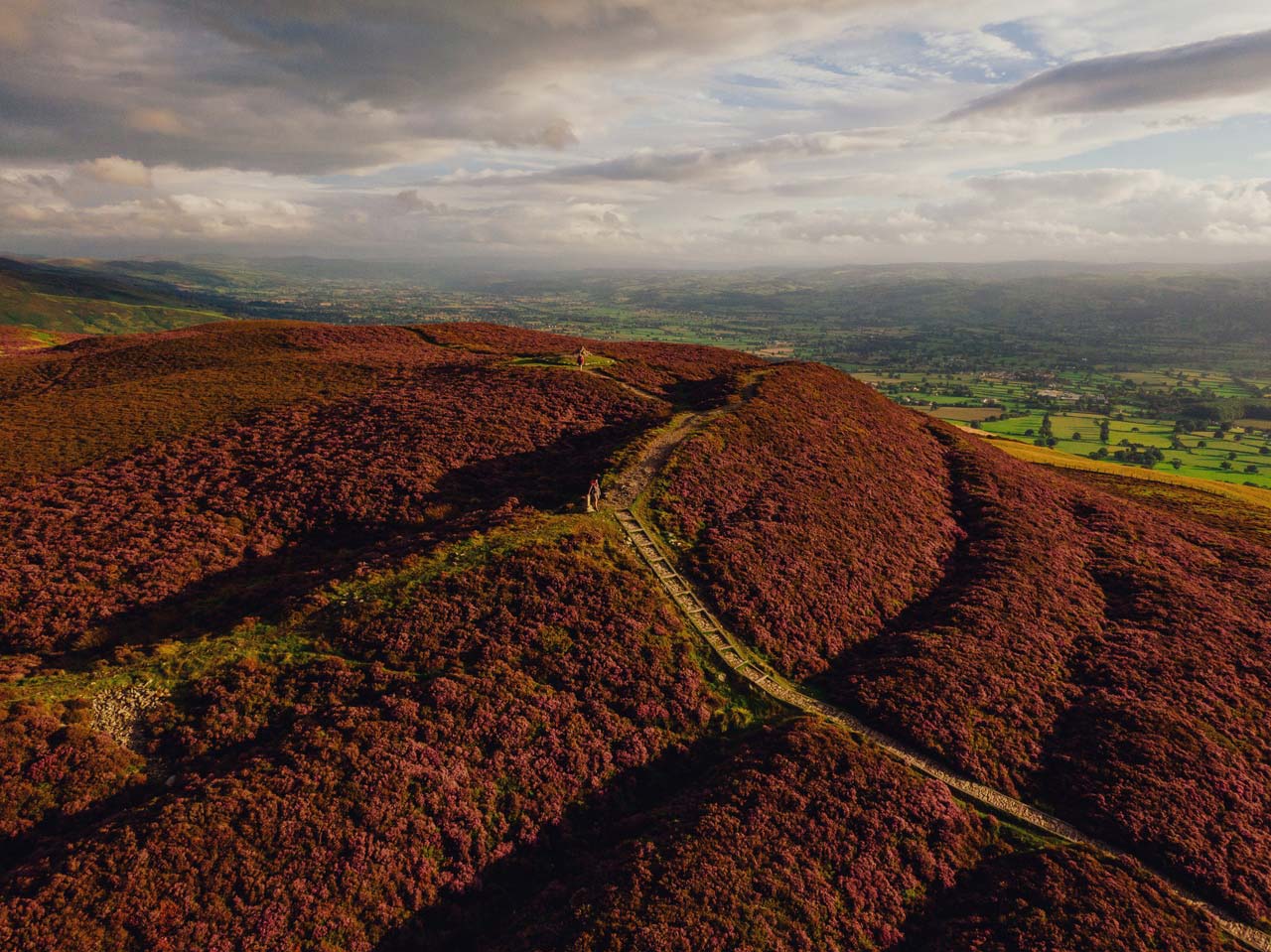
How to visit the Elan Valley
There are a few different entry points to choose from. The nearest train stations are Machynlleth to the north, near the border with Snowdonia; Llandovery to the south, on the edge of the Brecon Beacons; and Knighton to the east, on the English-Welsh border. The latter is close to Offa’s Dyke – the earthwork dug on orders of the 8th-century ruler of the Anglo-Saxon kingdom of Mercia to mark the boundary of his power. If you are driving, the town of Rhayader makes a useful entry point to the Elan Valley, where much of the action takes place. Out of the three train stations, Machynlleth has the best connections to major cities.
I ventured here as part of a cycle up the length of Wales from the south coast at Cardiff to the northwestern tip of Holyhead on the Isle of Anglesey. We wild camped in the Brecon Beacons on our first night, rolled on to Llandovery for our second, and ventured through the Cambrian Mountains on our third and fourth day, weaving around Lyn Brianne and across the Elan Valley. We stayed at Claerddu bothy and a campsite near Machynlleth the following night.
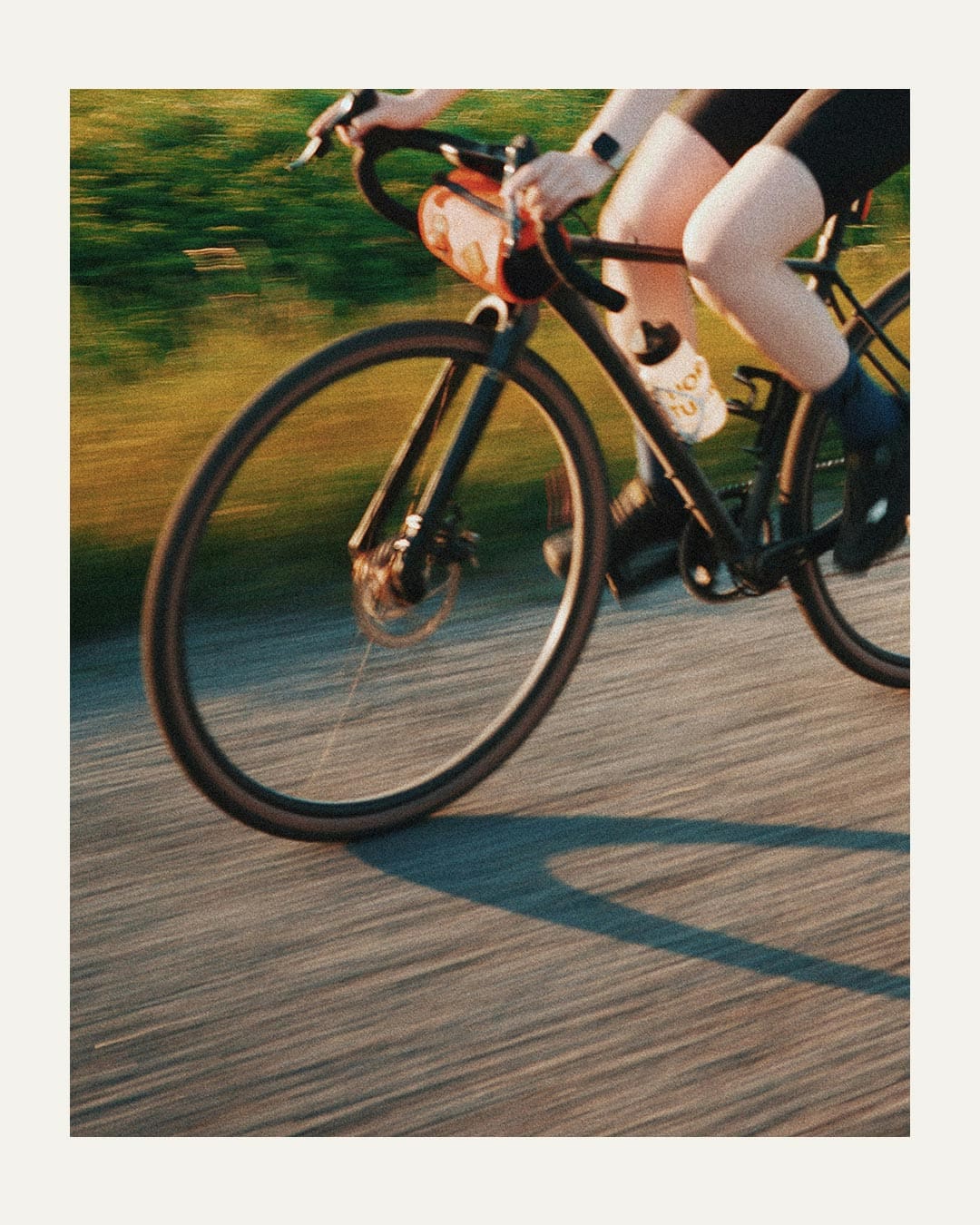

A shorter route that focuses specifically on this area is the Trans Cambrian Way – an off-road cycle that begins at Knighton and zigzags through the Cambrian Mountains along 150 miles of rugged trails before finishing at Dovey Junction train station near Machynlleth. Most riders do it in two or three days on a mountain bike with full suspension, but sadists are known to charge over the bumps on a rigid gravel bike in a single day. Otherwise, a simple out and back route from Rhayader would make an excellent introduction to the Elan Valley.
The area would be a great place for a thru hike, but the dipping and diving gravel roads lend themselves superbly to cycling: you are still crossing the desert under your own steam, while affording yourself more chance to make it to the single post office shop for miles around before closing time. I saw campers in a roof tent on top of a 4×4, parked up next to one of the reservoirs, which looked like a fun way of taking in the area, too.

What to pack
If you are cycling, a gravel bike with wide tyres or a mountain bike would work well. Pack a sleeping bag, mat, camping stove and food if you’re planning to stay the night here off-grid – there are very few supply points. You can pack your things in pannier bags, which attach to a front or rear rack, or in frame bags that strap directly to the bike. Don’t forget a waterproof and a warm jacket.

Where to stay in the Elan Valley
Claerddu bothy is independently run and located in the middle of the Elan Valley. If you are familiar with the bothy tradition of rudimentary shelters with nothing in the way of amenities, you will be blown away by this place. There’s a flushing toilet in an outbuilding, running water above a kitchen sink in the bothy proper, a neat little log burner and – get this – there’s actual logs supplied by the owner. It really is remarkable. I arrived on a Saturday in the middle of the August bank holiday weekend, and barring the mountain bikers who had to camp outside, three different groups of around 10 people were able to find a spot to sleep, their bikes parked up against the stone wall outside, wet socks warming on the stove. Otherwise, Nant Rhys bothy to the north can be found beside a thicket of conifers, and Elan Oaks campsite is conveniently positioned along the entry road to the Elan Valley.
Staying in bothies is free and open to all on a first come, first served basis. There is a code of respect you need to show to them, namely leaving the space in the same state you found it, or better, and being welcoming and friendly to other people you might meet there. Be nice, share your stories and your food, clean up, and take your rubbish with you.
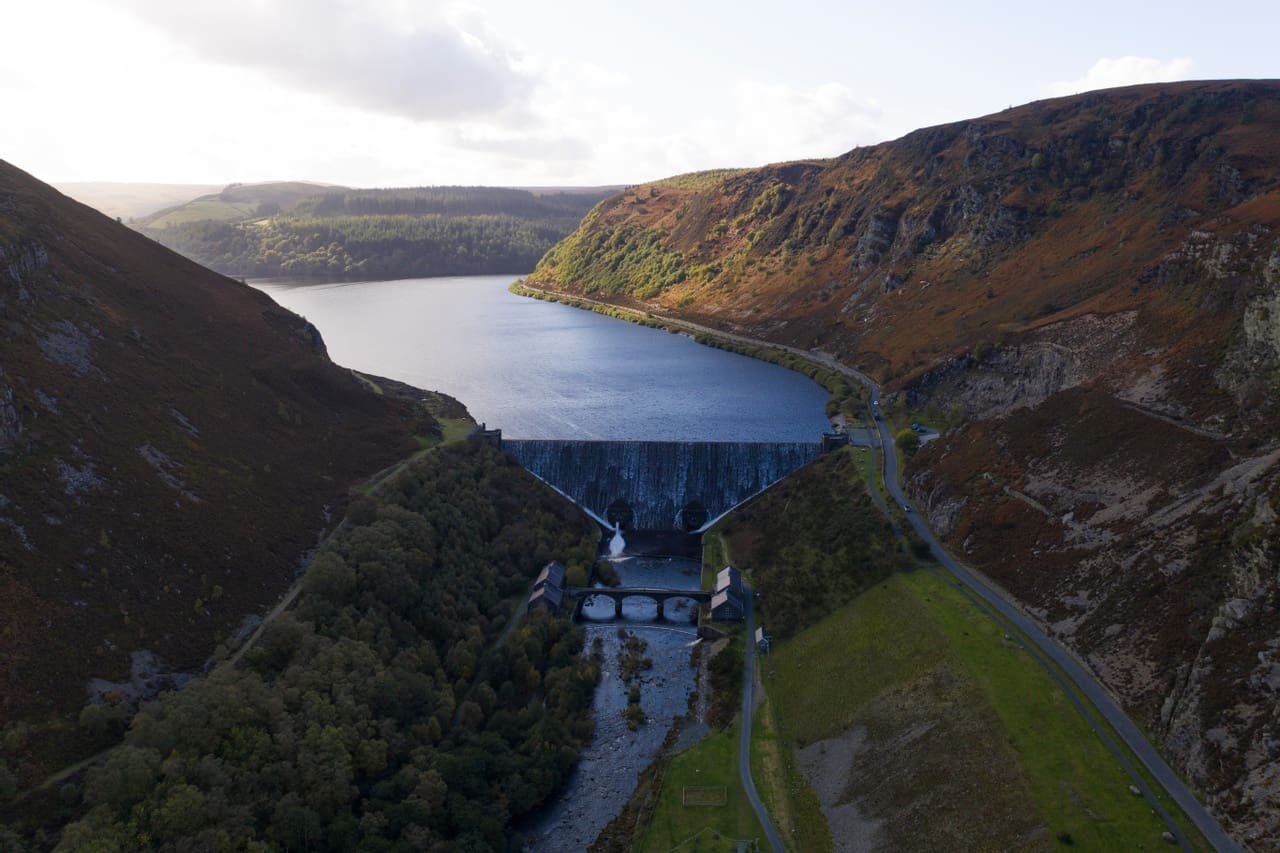
When to visit the Cambrian Mountains
The adage that there’s no bad weather, only bad equipment, applies to all adventures, but especially so in Wales. There is no guarantee of good weather any time of year. That being said, the sun shone for my entire six-day cycle in August. For visiting the Cambrian Mountains, any time of year has the potential for a good time, but note that after periods of heavy rain, the unpredictable river crossings will turn into miserable bog traverses.
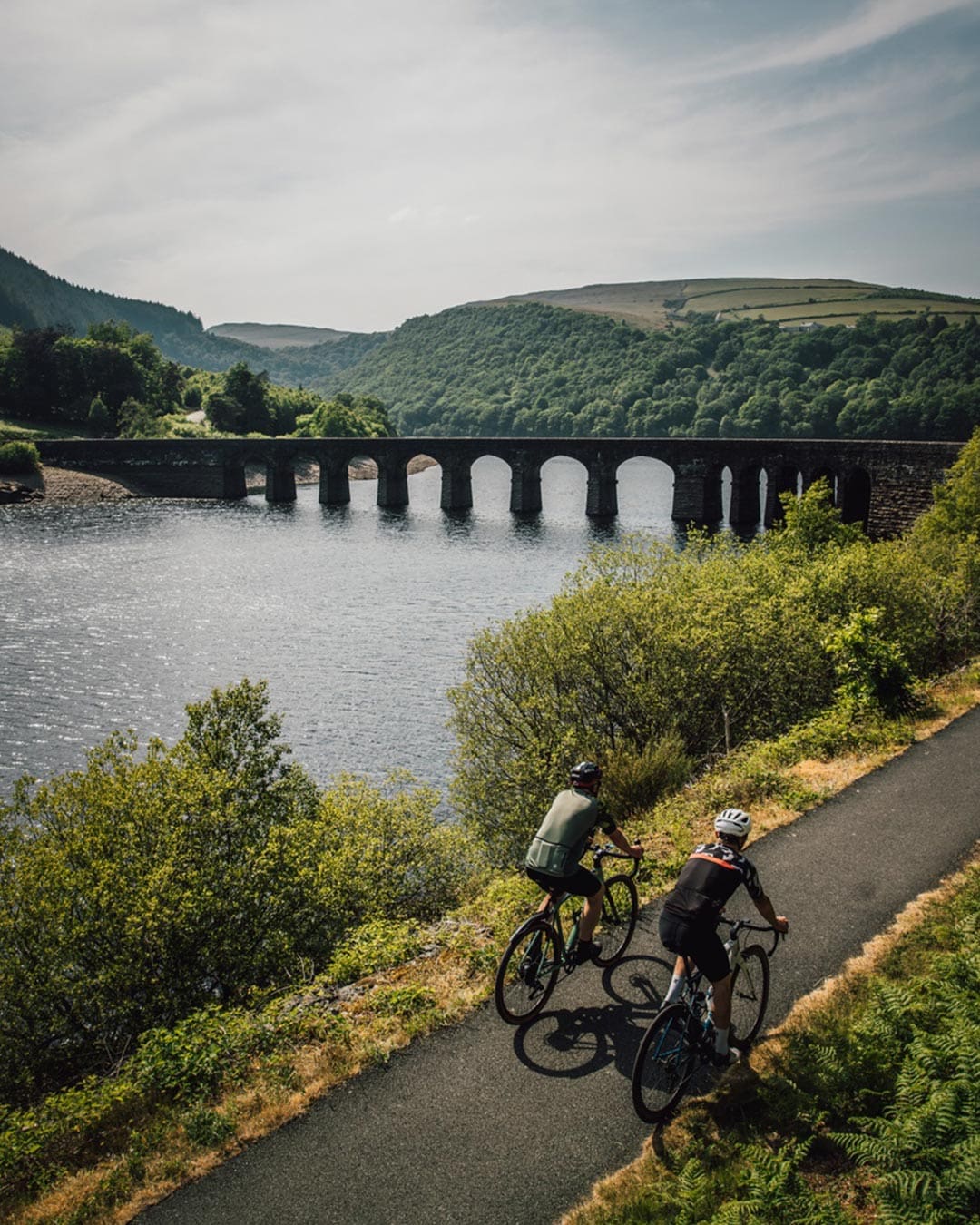
Safety and responsibility
Travel with someone else, or if going solo, tell someone your route plan and give a rough idea of what time you expect to arrive at certain points before you head out. Packing an OS map as a backup for any digital navigation never hurt anyone. Make sure to leave no trace during your adventure: whatever you bring in gets brought out with you (this includes banana skins and orange peels). There are a number of natural streams where you can fill up water, but bring a filter just to be sure. As for supplies, bring more food, and more spare inner tubes, than you think you will need.
For other similar adventure ideas, read our article on the best bikepacking routes in the UK.


